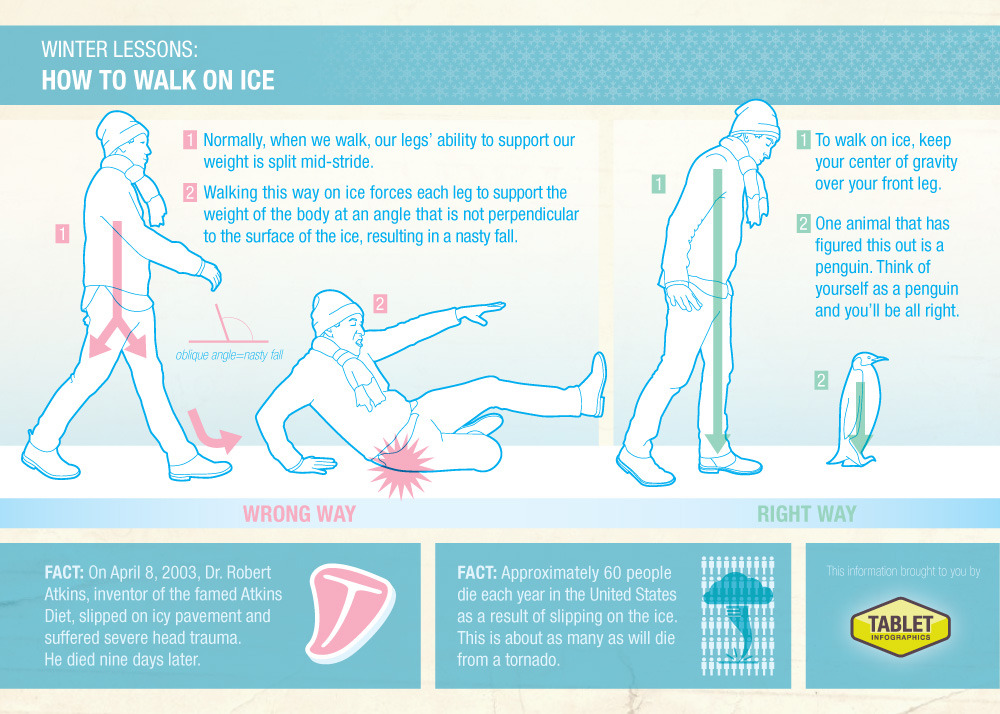We discovered a simple, but effective, infographic by Curtis Whaley of Tablet Infographics that describes a technique for walking on ice.

Obviously, avoiding ice in the first place would be ideal, but if you must walk on it, these simple instructions combined with appropriate footwear may help you avoid a fall-related injury.
Additionally, you can use your SafeStart training to further reduce the risk of a fall by:
- Self-Triggering on your state. If you’re rushing, be sure to slow down on ice or where ice might exist. If you’re frustrated or tired, you may not even be looking at or thinking about the ice or surface you’re walking on, so self-trigger to bring your eyes and mind back on the task of walking.
- Analyzing close calls. If you’re walking and slip a little, or notice that the ground/floor is slippery, don’t just ignore it. Instead, quickly think about it. Were you going too fast? Is it your footwear or the surface itself, etc.? Adjust accordingly.
- Working on habits. Get in the habit of testing your footing before committing weight to your feet. Start practicing with getting in and out of your vehicle, but also whenever you change walking surfaces (coming in from outside, going from pavement to a snow-covered walkway).
- Looking at others. By actively looking at others for the SafeStart state-to-error risk pattern you will also think more about your own risk—especially if the people you see are walking like penguins.
Learn more about the SafeStart concepts and techniques for reducing the risk of injury in any situation, by signing up for a free webinar or attending one of our public workshops.
